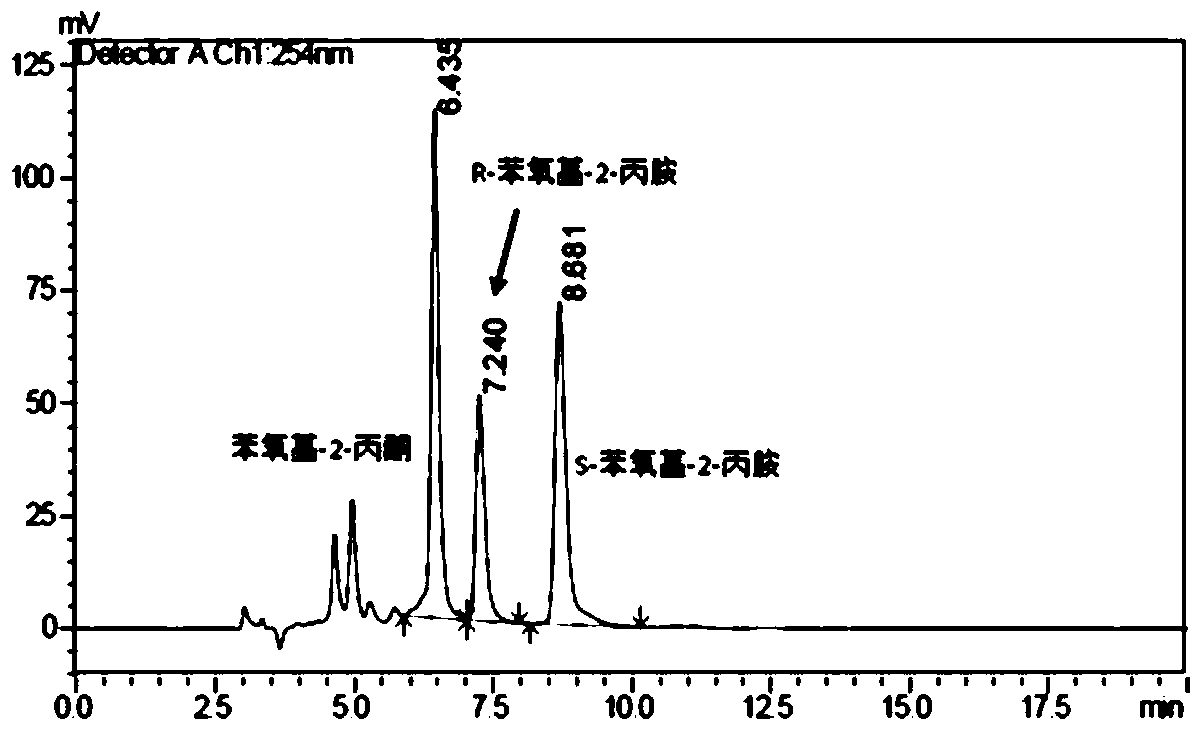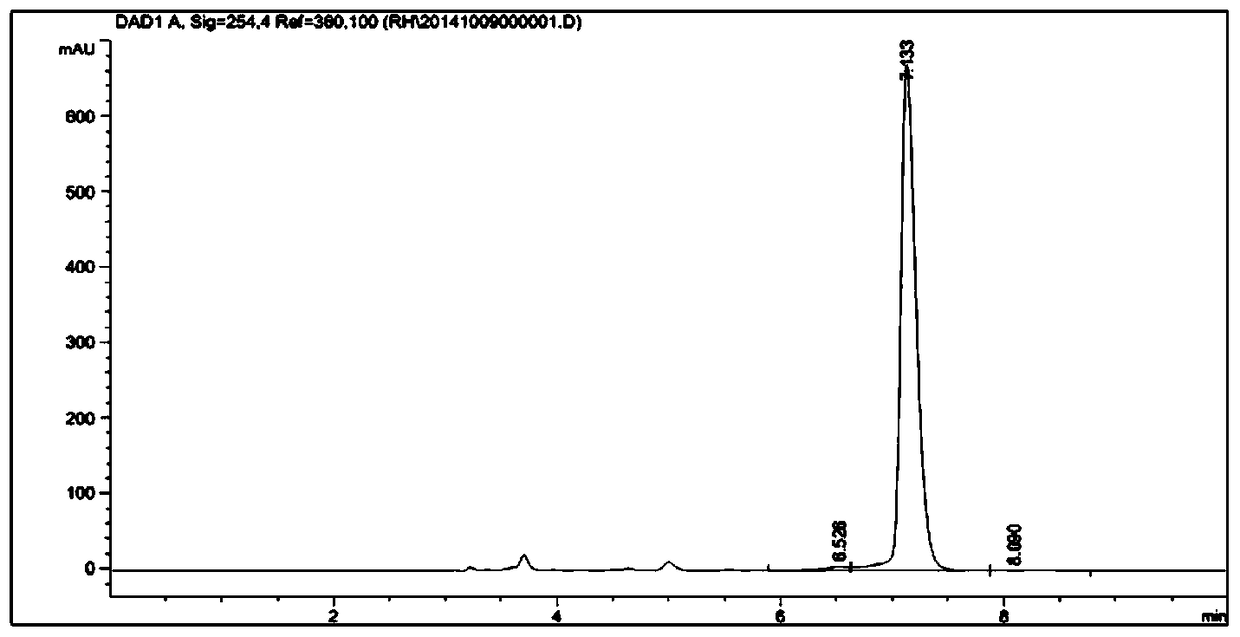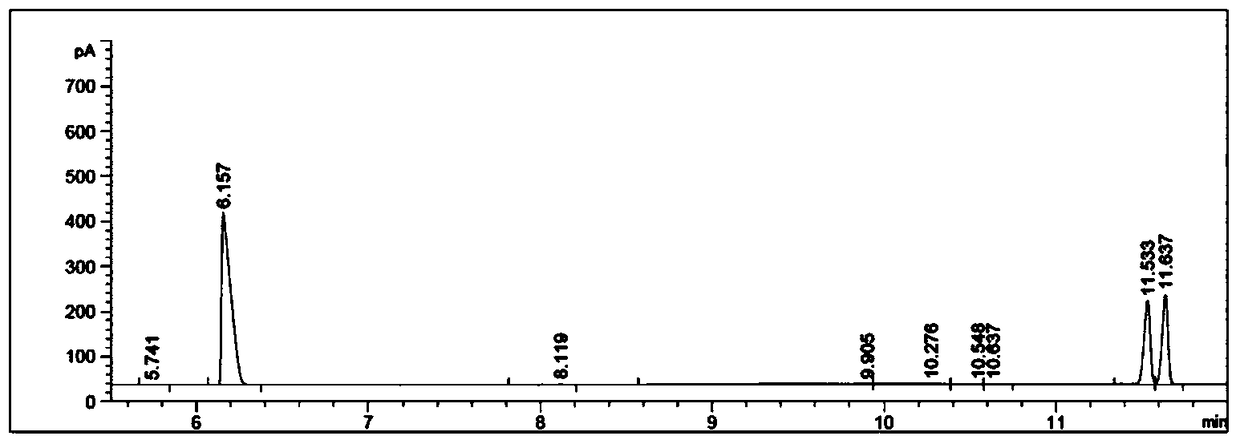A kind of method for preparing chiral amine by multi-enzyme coupling system
A chiral amine and system technology, applied in the field of biocatalytic asymmetric transformation, to reduce production costs, solve the problem of coenzyme regeneration, and promote continuous effects
- Summary
- Abstract
- Description
- Claims
- Application Information
AI Technical Summary
Problems solved by technology
Method used
Image
Examples
Embodiment 1
[0030] 1) Preparation of amine dehydrogenase:
[0031] Strain construction, cultivation and collection: construct the amine dehydrogenase gene shown in SEQ ID NO.1, the amine dehydrogenase gene sequence is derived from Bacillusbadius, and use the above amine dehydrogenase gene to prepare engineering bacteria expressing amine dehydrogenase Recombinant Escherichia coli E. coli BL21(DE3)-adh; the above-mentioned engineered bacteria were inserted into 200 mL LB medium at an inoculum size of 1%, and kanamycin was added before inoculation to make the final concentration 40 μg / mL. The incubation time was 6 hours at 37° C. with a rotating speed of 200 rpm. The inducer IPTG was added so that the final concentration was 10 mg / ml, and culture was continued for 4 hours at 30° C. and 200 rpm.
[0032] Preparation of crude enzyme solution: centrifuge the fermented solution obtained at the end of the culture in a refrigerated centrifuge (4°C, 8000rpm, 15min) to obtain cells, discard the sup...
Embodiment 2
[0043] 1) Preparation of amine dehydrogenase: same as step 1) of Example 1.
[0044] 2) Preparation of coenzyme regeneration enzyme:
[0045] Formate dehydrogenase:
[0046] Strain construction, cultivation and collection: construct the formate dehydrogenase gene shown in SEQ ID NO.3, the formate dehydrogenase gene sequence is derived from Candida boidinii, and use the above formate dehydrogenase gene to prepare a project that can express formate dehydrogenase Recombinant Escherichia coli E. coli BL21(DE3)-fdh; Inoculate the strain into 200 mL LB medium with 1% inoculum size, and add kanamycin before inoculation to make the final concentration 40 μg / mL. The incubation time was 6 hours at 37° C. with a rotating speed of 200 rpm. The inducer IPTG was added so that the final concentration was 10 mg / ml, and culture was continued for 4 hours at 30° C. and 200 rpm.
[0047] The preparation steps of the crude enzyme solution and the pure enzyme are the same as those of the amine d...
Embodiment 3
[0053] 1) Preparation of amine dehydrogenase: same as step 1) of Example 1.
[0054] 2) Preparation of coenzyme regeneration enzyme: refer to step 2) of Example 1 to obtain glycerol dehydrogenase; refer to step 2) of Example 2 to obtain formate dehydrogenase.
[0055] 3) Using amine dehydrogenase and coenzyme regeneration enzyme to construct a multi-enzyme coupling system, in this example, the amine dehydrogenase-formate dehydrogenase-glycerol dehydrogenase coupling system:
[0056] glycerol, sodium formate and NAD + Soluble in the ammonium chloride-ammonia buffer solution with a concentration of 500mM and a pH value of 8, the addition of glycerol is 2M, the addition of sodium formate is 300mM, NAD + The amount of amine dehydrogenase added is 0.2mM, add amine dehydrogenase enzyme solution, formate dehydrogenase enzyme solution, glycerol dehydrogenase enzyme solution, and make the final concentration of amine dehydrogenase 100U / L, formate dehydrogenase and glycerol dehydrogena...
PUM
 Login to View More
Login to View More Abstract
Description
Claims
Application Information
 Login to View More
Login to View More - R&D Engineer
- R&D Manager
- IP Professional
- Industry Leading Data Capabilities
- Powerful AI technology
- Patent DNA Extraction
Browse by: Latest US Patents, China's latest patents, Technical Efficacy Thesaurus, Application Domain, Technology Topic, Popular Technical Reports.
© 2024 PatSnap. All rights reserved.Legal|Privacy policy|Modern Slavery Act Transparency Statement|Sitemap|About US| Contact US: help@patsnap.com










